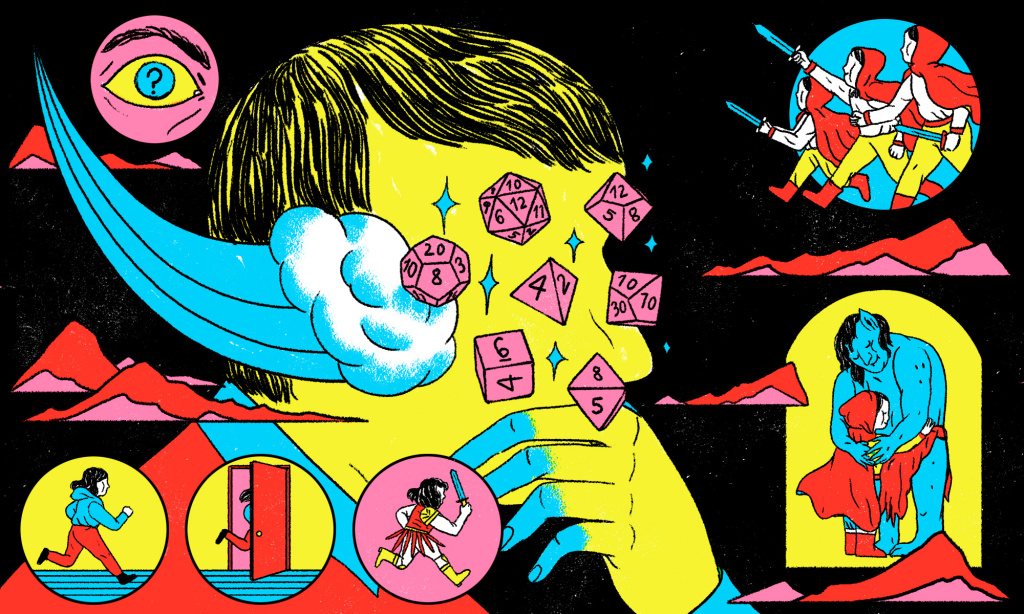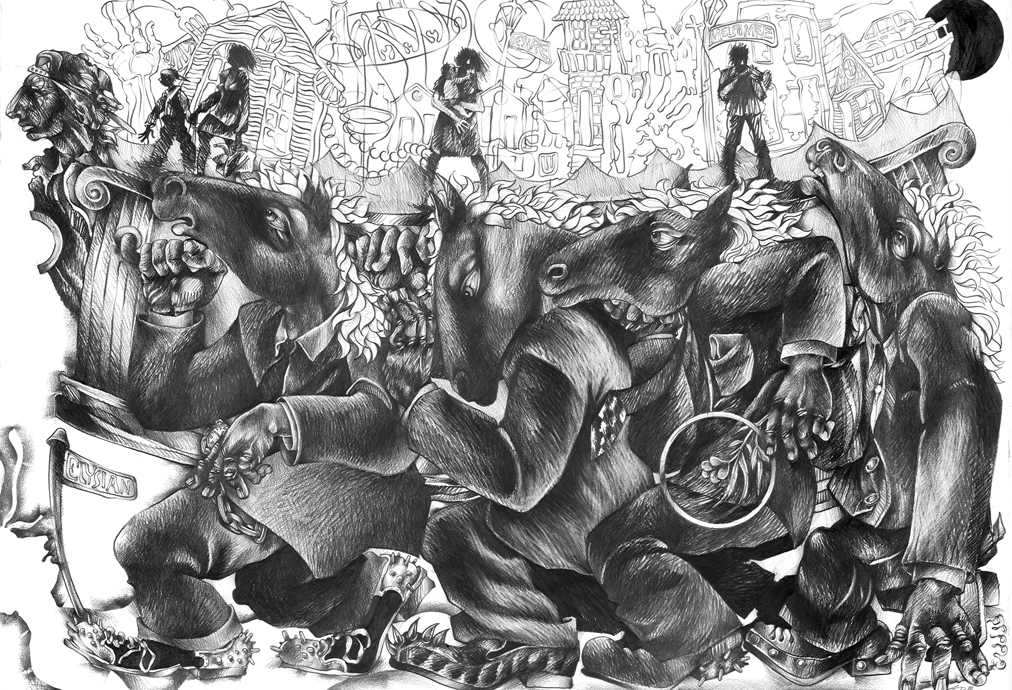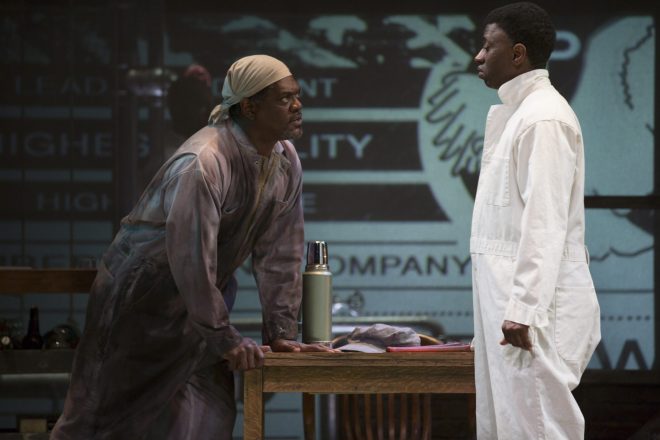Steve Prince is known for depicting many themes in his work; Christianity and the lives of Black Americans are two big ones.
As many of Prince’s pieces are more symbolic, this one, “Urban Nativity” is a more blunt take on these topics. Take note that Prince’s usual characteristics are still present-the block shaped pants and shoes suggest that the horsemen of the apocalypse are standing over the dead body. Symbolically, the horsemen may represent the men who’ve killed the victim. They may also represent passerby’s, who are unfeeling to the tragedy in front of them, as bystanders, they are are also responsible for this boy’s death. The dead body is only covered by a cloth, which forms Prince’s trademark dove. This dove suggest that the boy who died was innocent and peaceful, his death was a great tragedy and wrongdoing. The dove is also lying on the ground, meant to mean that peace is dead too. Lastly, a price tag hangs from the victim’s foot. This can be taken to mean many things, but I think the simple message it is supposed to bring to those viewing Urban Nativity is that a price was put on this person’s life and that the world didn’t slow down to mourn, it was desensitized to his death.

 (Artwork by:
(Artwork by: 
